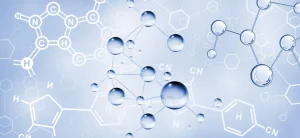Stille coupling reactions
The Stille coupling reaction is a palladium-catalyzed CC-bond coupling of an organotin reagent and a halogenated substance or halogen-like substance. This reaction is less restrictive on the R group of the halide. The conditions for the reaction are more varied, and also as described below there are many types of halogenates and organotin reagents that are coupled to each other, so there are many products that can be synthesized by this reaction. The disadvantage of this reaction is that the organotin reagent is more toxic and it is less polar and has a low solubility in water. Although organotin reagents are stable, the importance of this reaction is rapidly diminishing due to the discovery of the Suzuki reaction, which is almost identical to the Stille coupling, and which uses organoboric acid and its derivatives, is easy to use, and does not have the disadvantages of organotin reagents.

Stille-Kelly reaction
Palladium-catalyzed cross-coupling of intramolecular diaryl halides with di-stannic reagents.
Stille carbonylation coupling reaction
This reaction was first developed by Migita and Stille to prepare ketones by Stille coupling using an acyl chloride. However, chlorides are usually unstable and incompatible with reactive functional groups, limiting their application. In the 1980s, a transition metal-catalyzed carbonylation coupling reaction of organohalogenated hydrocarbons and halogenated hydrocarbon-like hydrocarbons was developed to prepare ketones, and the Pd(0)-catalyzed coupling of organotin reagents, carbon monoxide, and organoelectrophilic reagents (aryl and alkenyl halogenated hydrocarbons, and aryl and alkenyl halogenated hydrocarbons) to form new carbon-carbon single bonds is called the Stille carbonylation coupling reaction.

Tsuji-Trost reaction
A palladium-catalyzed reaction utilizing allyl compounds (e.g., allyl acetate and allyl bromide) to allylate nucleophilic reagents (e.g., reactive methylene compounds, enol compounds, amines and phenols).

Catellani reaction
[Catellani, M.; Frignani, F.; Rangoni, A. Angew. Chem. Int. Ed. Engl. 1997, 36,119-122.].
Under the co-catalysis of norbornene and Pd, aryl iodides first undergo a Heck reaction with norbornene, followed by an alkylation or arylation reaction with the activation of the neighboring C-H, and finally a reaction with the coupling of the terminal olefin to obtain an o-substituted alkenyl aryl hydrocarbon. This reaction is a three-component coupling reaction. Alkenyl aromatics with different neighboring substituents can be obtained by using neighboring monosubstituted aryl iodides as substrates.
White Catalyst
White catalyst is a versatile commercial catalyst. It catalyzes the efficient oxidation of relatively inert C-H bonds to form new C-O, C-N and C-C bonds. Intramolecular or intermolecular C-H oxidation of various olefins is possible with high chemical, regioselectivity and stereoselectivity.

